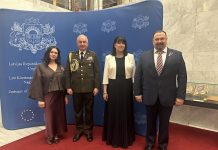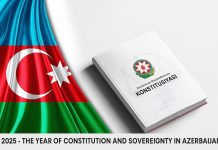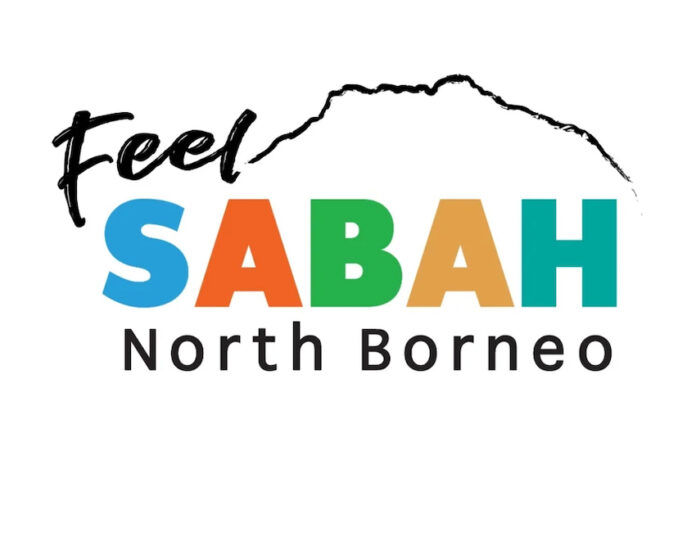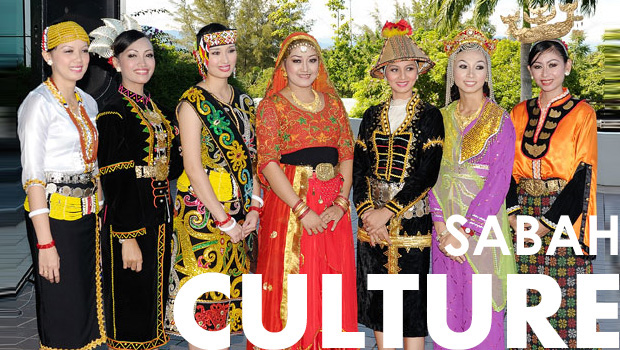“Feel Sabah, North Borneo” – Tourism Promotion Mission in Budapest
Edited by Anna Popper
After participating in the annual ITB Berlin / Germany, the world’s leading travel trade fair, the delegation of the Sabah Tourism Board (STB) arrived in Budapest on a tourism promotion mission from 9th to 12th March 2024.
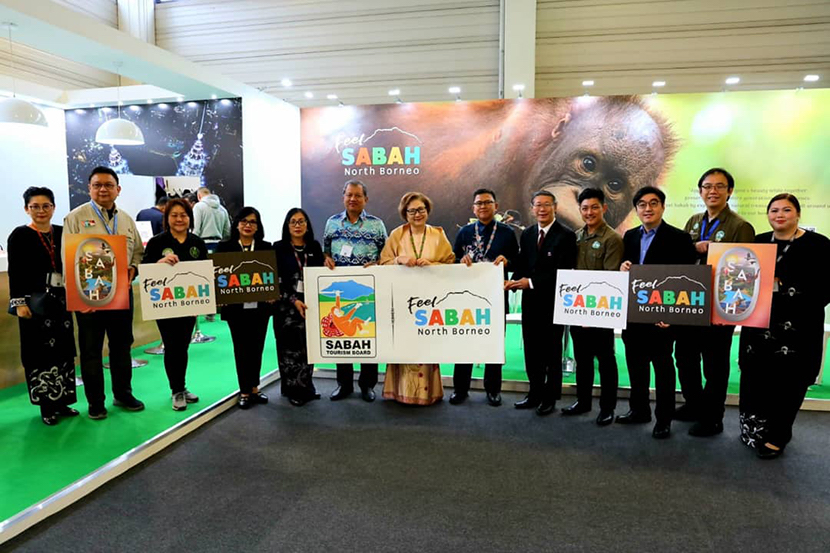
Accompanied by His Excellency Mr. Francisco Munis, Ambassador of Malaysia to Hungary, the STB delegation was spearheaded by State Minister of Tourism, Culture and Environment of Sabah, Honourable Datuk Christina Liew. She was joined by the Assistant Minister, Honourable Datuk Joniston Bangkuai, the Permanent Secretary of the Ministry, Ms. Josie Lai Mei Sing, the Sri Pelancongan Sabah Chairman, Ken Pan Ying On, and the Sabah Tourism Board CEO, Mr. Julinus Jeffery Jimit.
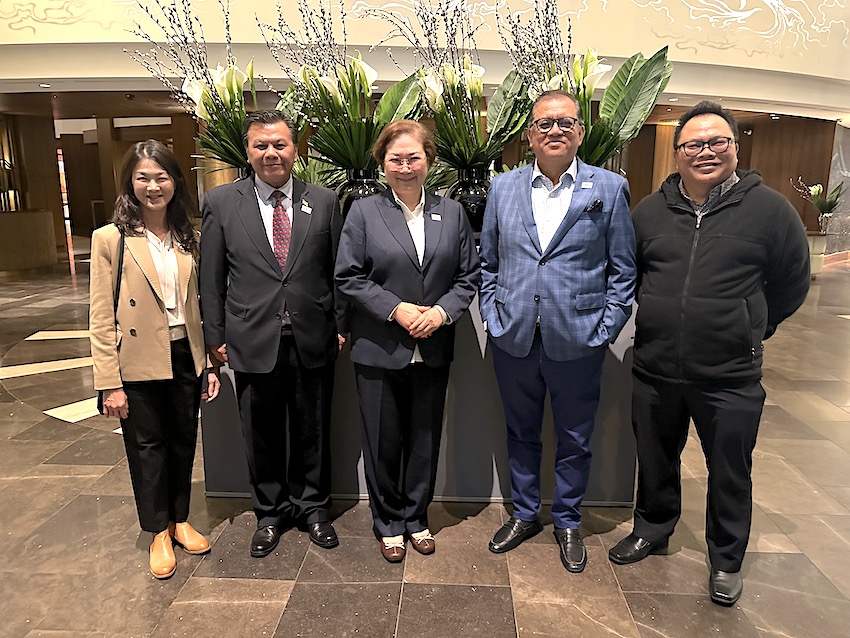
Hosted by the Embassy of Malaysia in Hungary, the Diplomatic Press Agency was honoured to be invited to a dinner with Minister Datuk Christina Liew at the Kempinski Hotel, who spoke about various stages of her tourism promotion mission in Budapest. (Short video about the dinner: https://fb.watch/qV98Zu1Aw8/)
“We are exploring new markets. As Hungary is a landlocked country, Sabah’s diverse offerings of pristine islands and beaches as well as luxurious resorts provide a refreshing and exotic destination for travellers seeking sun, sand and adventure,” – the Minister said, while calling on the Hungarian media to promote Sabah in their publications.
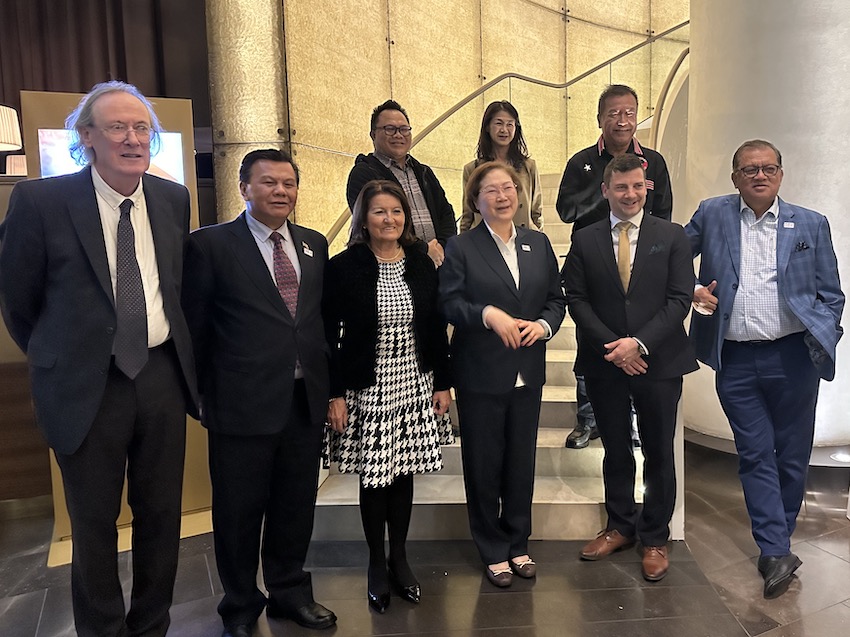
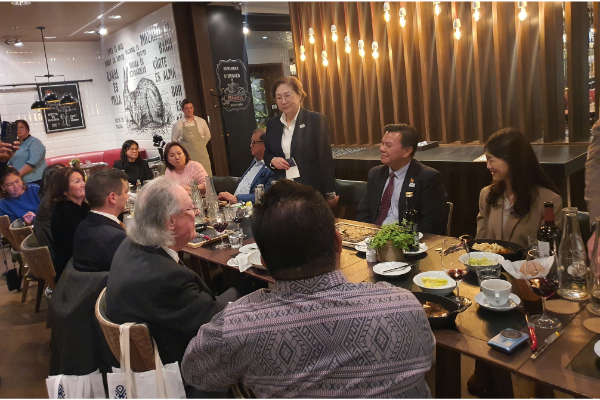

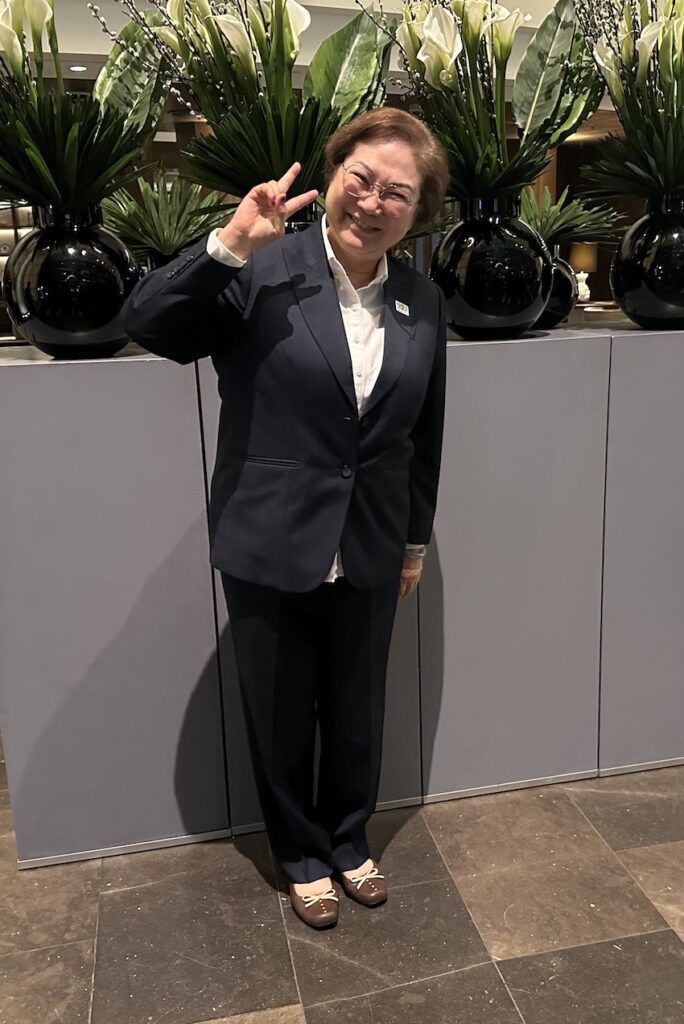


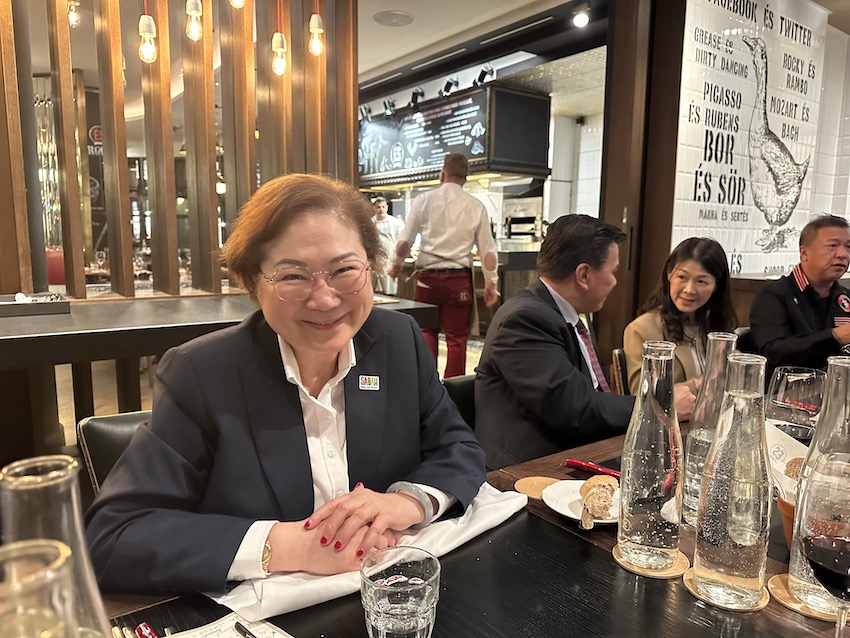

Realising the region’s untapped market, the tourism promotion mission in the Central and Eastern European region was the first to be held by the Sabah Tourism Board, while meeting with 31 local travel agencies in Budapest for a presentation on Sabah as a premier tourism destination, nicknamed the “Land Below the Wind”, as the State of Sabah in North Borneo, Malaysia lies under the typhoon belt of East Asia and has never been battered by devastating typhoons.
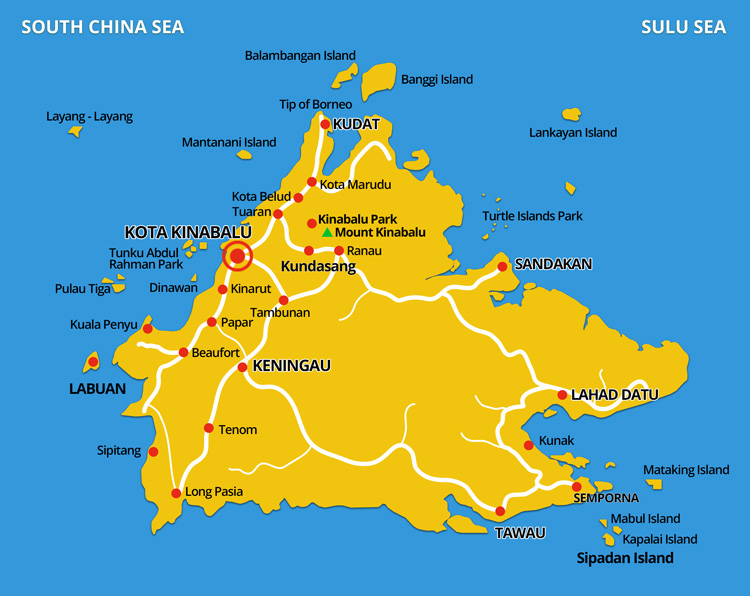

Travel agents and tour operators in Hungary were invited to promote Sabah as a premier destination through collaborations and partnerships with STB to develop promotional campaigns and marketing initiatives that showcase a wide range of unique attractions and experiences of Sabah, a vibrant destination to the Hungarian market. “We encourage travel agencies and tour operators to reach out to us to explore potential collaboration opportunities and join hands in promoting Sabah to Hungarians,” the Minister added.
Short videos about the Meeting and the Presentation: https://fb.watch/qV8VK0l6DE/ and https://fb.watch/qV8mowroxE/
Sabah offers a unique blend of adventure, culture and natural beauty that distinguish it from other destinations. From exploring the pristine beaches fringed by turquoise waters, the rich marine life of its tropical islands, breath-taking landscapes, lush rainforests teeming with exotic flora and fauna, vibrant biodiversity with endemic species to climbing Mount Kinabalu, Sabah provides a myriad of tourism opportunities, unmatched experiences for visitors of all interests. Additionally, Sabah’s rich cultural heritage, multitude of ethnic groups and genuine hospitality combine to craft a truly immersive and unforgettable journey for guests from all around the world.
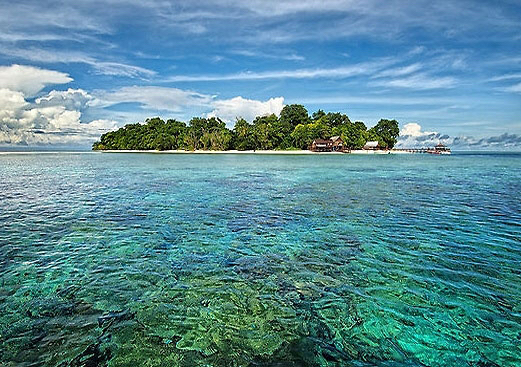




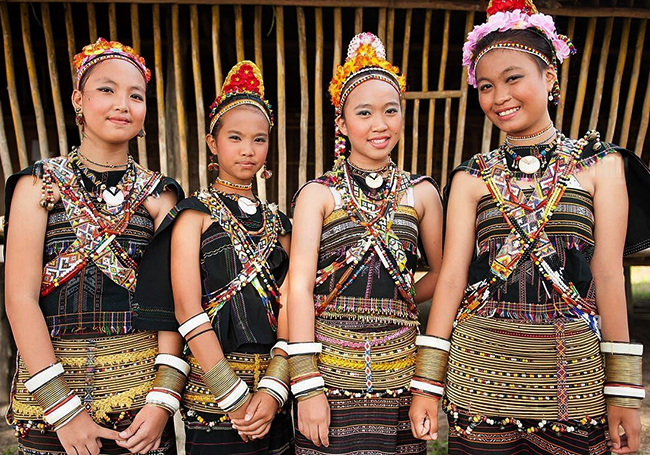
Sabah is firmly dedicated to fostering sustainable tourism practices, a commitment that shines through various government initiatives aimed at preserving its natural beauty and cultural heritage. Notably, Sabah has implemented stringent conservation efforts in marine and nature parks, exemplified by renowned destinations such as the magnificent Sipadan National Marine Park, which not only showcases exceptional marine life and biodiversity with world-class diving sites to experience its unspoiled underwater wonders, but also upholds strict conservation measures that includes the sea turtle sanctuary and the shark sanctuary.
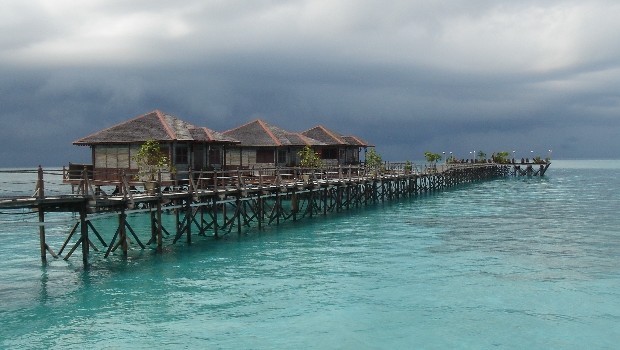
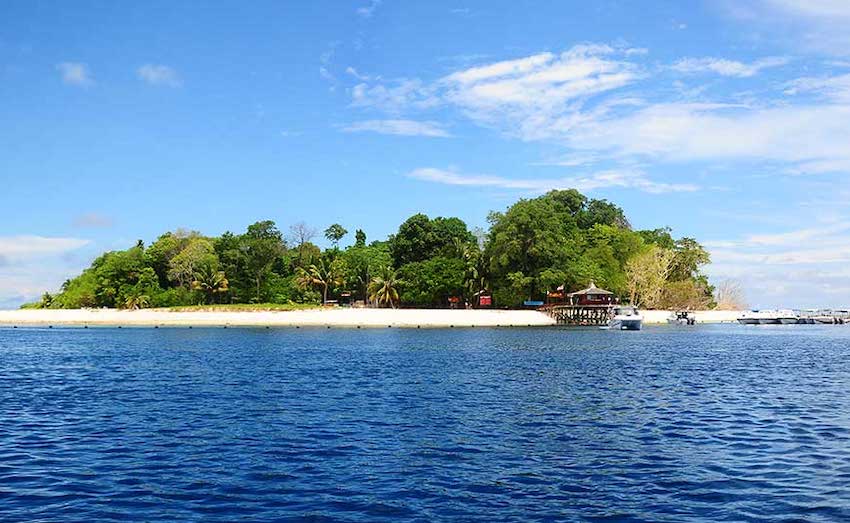
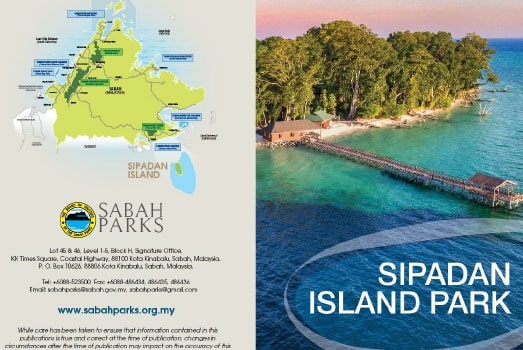
There are a total of 394 official islands in Sabah’s territory. Sipadan, the only oceanic island in entire Malaysia, is a prehistoric volcano. Its marine nature has remained unchanged since 1989, when Jacques-Yves Cousteau, the world-famous French underwater explorer said about Sipadan in his film, entitled Borneo: The Ghost of the Sea Turtle: “I have seen other places like Sipadan 45 years ago, but now no more. Now we have found an untouched piece of art.” And it became Cousteau’s favourite diving site.
Moreover, Sabah takes pride in the Kinabalu UNESCO Global Geopark, which protects natural treasures while promoting responsible tourism. At this geopark, visitors can immerse themselves in exploring unique geological formations, diverse ecosystems, and cultural heritage sites, while supporting local conservation endeavours.
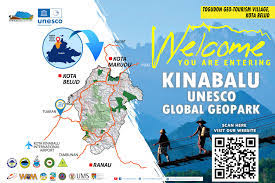
Destinations such as Bohey Dulang Island epitomise Sabah’s commitment to eco-friendly tourism, offering activities like hiking and birdwatching alongside initiatives that bolster conservation efforts. These efforts are in alignment with Sabah Tourism’s overarching goal of advancing sustainable tourism practices and safeguarding the region’s natural and cultural heritage for generations to come.
Furthermore, Sabah’s wildlife conservation initiatives, exemplified by establishments like the Sepilok Orang Utan Rehabilitation Centre (SOURC) and the Bornean Sun Bear Conservation Centre (BSBCC), underscore the region’s unwavering dedication to protecting endangered species and their habitats. Through these initiatives, Sabah not only preserves its biodiversity but also fosters a harmonious relationship between tourism and environmental conservation.
As part of the visit, the delegation also met with the Budapest City Council, represented by Budapest Deputy Mayor for Human Affairs, Dr. Anett Bősz, where the Minister advocated exchange visits to foster people-to-people connections. She also said the meeting was an invaluable opportunity for Sabah to explore new markets and introduce the destination to Central Europe, adding that both Sabah and Hungary could develop promotional campaigns and marketing strategies through collaboration. Budapest’s strategic location and flight connectivity enable travellers to reach Sabah via flights connecting the two areas through Shanghai in China, or Kuala Lumpur. Responding to Mrs. Liew’s invitation to visit Sabah, Mrs. Bősz welcomed the idea of connecting the two cities. “I am indeed motivated to go on this road of collaboration,” she added.
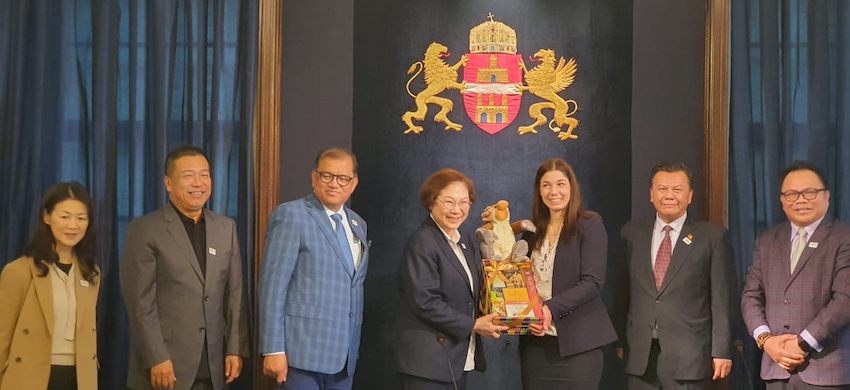
As Sabah wants to boost tourism through sport events as well, the Malaysian Ambassador to Hungary H.E. Francisco Munis also mentioned an excellent idea of cooperation: the Budapest Marathon, which could be a platform for collaboration, as Sabah also hosts the Borneo Marathon and the iconic Mount Kinabalu International Climbathon, the highest peak in Southeast Asia, and the surrounding Kinabalu National GeoPark, declared Malaysia’s first World Heritage Site by UNESCO in 2000. In 2023 the Kinabalu National Geopark was declared the UNESCO Global Geopark title, making Malaysia the 3rd country in the world to achieve the coveted Triple Crown!
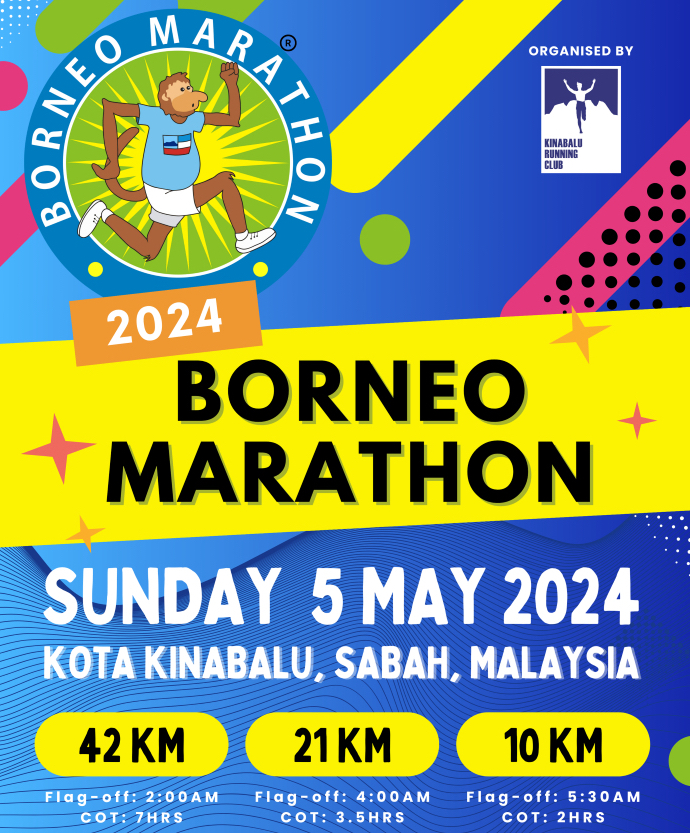
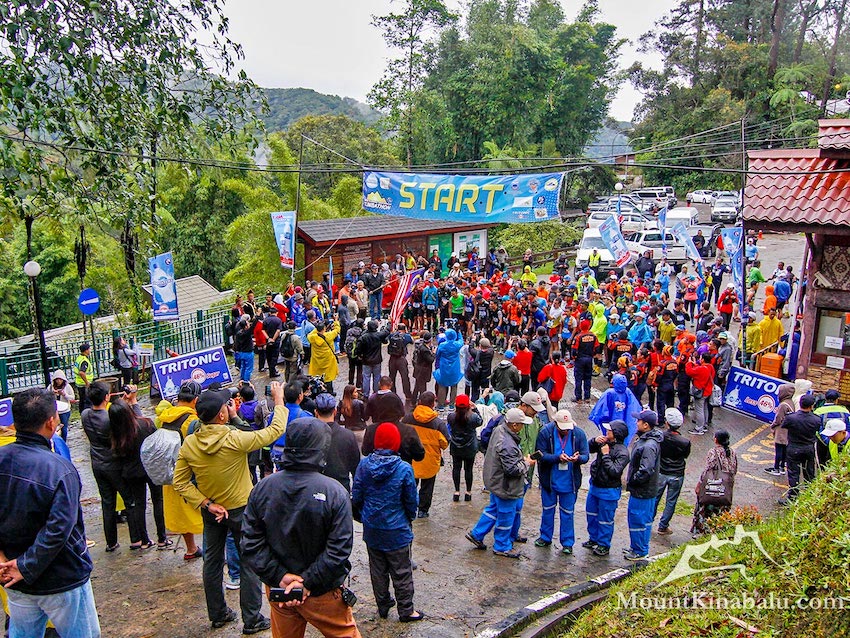

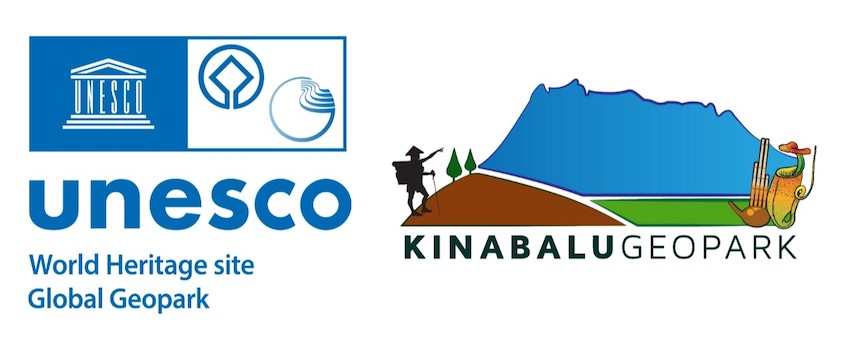
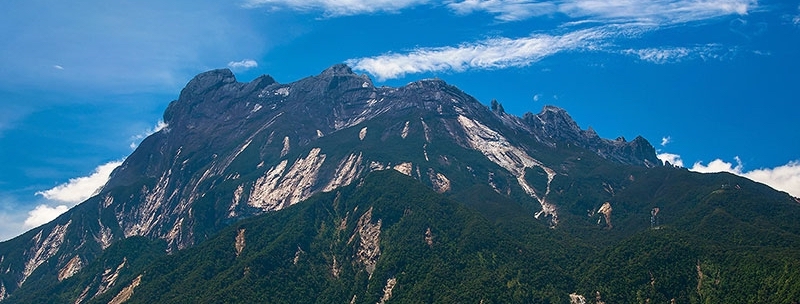
The delegation had meetings also with the Hungarian National Tourism Agency and with the President of the Hungarian Federation of Rural and Agrotourism, Mr. Pál Frankó, to explore collaboration opportunities and learn more about the Hungarian tourism industry in the various sectors.


Sabah demonstrates commendable dedication and enjoys strong backing by the government to fostering Community-based Tourism (COBT) in its rural areas through impressive and efficient initiatives. These efforts contribute to the development of rural tourism destinations, showcasing Sabah’s great potential in this sector. Notably, these endeavours prioritise sustainability in their execution, recognising the crucial importance of environmental protection for the long-term viability of tourism.

Assistant Minister, Honourable Datuk Joniston Bangkuai opined that Sabah could also learn from the experiences of the Hungarian rural tourism industry and vice versa.
He was positive that the Rural Tourism Federation of Sabah could collaborate with its Hungarian counterpart in promoting rural tourism for mutual benefit.

Mr. Julinus Jeffery Jimit, who presented Sabah’s tourism product to Hungarian travel agents, was confident that Hungary and Budapest will be an ideal gateway for tourists from Central and Eastern Europe to reach Sabah, given its extensive air connectivity with the Southeast Asian region. He also hopes that a specialised tourism product can soon be developed by working with the Hungarian travel agencies. Mr. Jimit is also optimistic that these new central and eastern regions of Europe could soon emerge as a potential large market for Sabah Tourism.
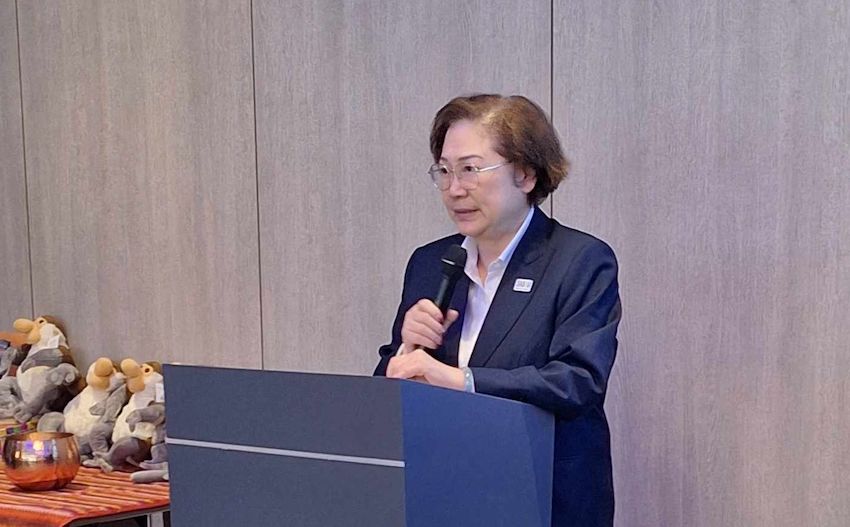
Minister Datuk Christina Liew concluded her promotion mission a success, with the Sabah Tourism Board gaining insights into the Hungarian tourism industry from both a national and regional perspective, which could assist the Sabah Tourism Board further assess the tourism market potential in the region. Moreover, the Sabah Tourism Board had the opportunity to share its own experiences with its Hungarian counterparts.
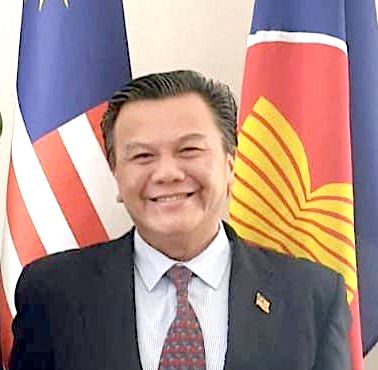
Malaysian Ambassador, H.E. Mr. Francisco Munis concluded that the Sabah Tourism Board has made the right move to explore the region’s untapped market potential. The tourism diplomacy approach taken by the Sabah Tourism Board to engage with tourism industry players in Hungary was also a plus in expanding further STB’s tourism networking and aid to its promotion efforts.
Why one must visit Sabah?
I consider myself fortunate to have had the opportunity to visit Sabah twice during my trips to Malaysia, working that time in sports diplomacy as well. Each moment of my stays was truly enjoyable as I delved into the unique attraction of Sabah, one of the 13 states of Malaysia nestled in North Borneo. Its distinctiveness from the other states left a lasting impression on me, providing unforgettable experiences and memories that I will cherish forever. Sabah boasts a wealth of natural wonders including stunning environments, rich biodiversity, diverse ethnicities and amazing cultural attractions. Its picturesque beaches, upscale hotels and restaurants with delicious cuisine and warm hospitality combine to create an exotic destination perfect for tourism.
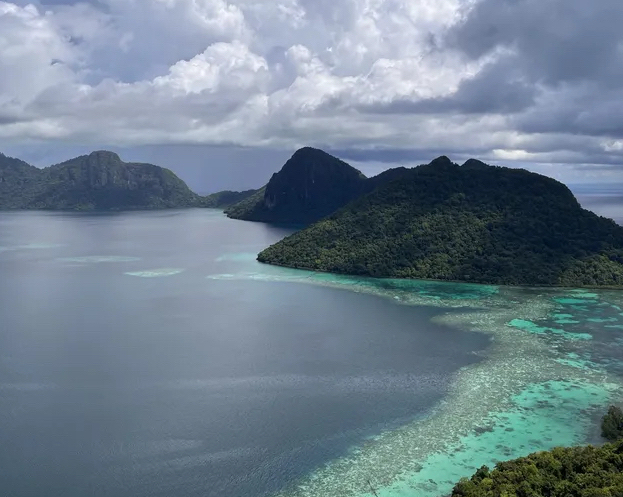

From my own experience I can attest to why you need to visit Sabah: among other things, because Southeast Asia’s highest mountain, the 4095 meter high Mount Kinabalu, is located here, you can cross fantastic rainforests and other untouched habitats. With the designation of the Kinabalu National GeoPark as a UNESCO Global Geopark, there are now 195 geoparks in 48 countries worldwide. Geoparks serve local communities by combining the conservation of their significant geological heritage with public outreach and a sustainable approach to development.


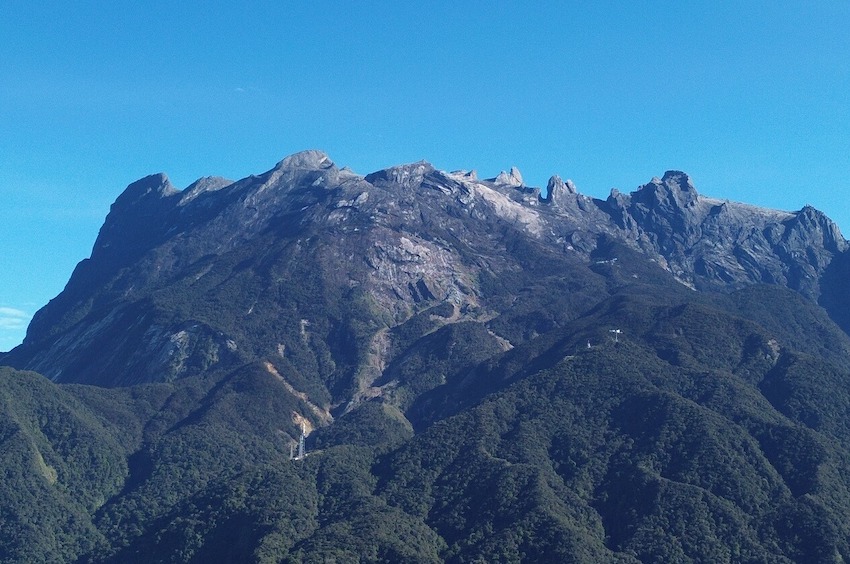
Unique Flora Species:
The Kinabalu UNESCO Global Geopark is home to many endemic plants and animals, including 900 species of orchids found only on Mount Kinabalu. This makes Kinabalu Park, covering 754 square kilometres, one of the richest places for wild orchid diversity per unit area in the entire world! Orchids are amazing not only for the number of species (1700 in Borneo), but also for the variety of shapes of their flowers. They can be as tiny as the head of a pin and I had the chance to see this little white wonder in the Kinabalu rainforest. I was really impressed to learn that Sabah is home to the most expensive orchid in the world: the beautiful Rothschild’s Slipper Orchid, scientifically known as Paphiopedilum rothschildianum. This stunning and exceptionally rare and endemic orchid species grows in its natural habitat, primarily on the slopes of the Mt Kinabalu rainforests. It takes 15 years for the plant to mature and produce its exquisite flowers. Due to its rarity and endangered status, the Malaysian government has taken measures to protect this precious flower, commonly referred to as the Gold of Kinabalu orchid, and save it from extinction.



Another extraordinary flower in Sabah is the Rafflesia, a giant jungle parasite living on other plants and trees. It is the largest flower in the world and has five brick-red, pale spotted, leathery petals. As one of the world’s rarest plants, it was discovered in 1818 by Sir Stamford Raffles, the founder of modern Singapore, who was the first European to see this giant flower in the rainforest. Aside from its rare size, Rafflesia is also one of the most distasteful plants in the world. The flowers look and smell like rotting flesh, and the foul odour attracts insects such as carrion flies for pollination. It holds a record size of 111 cm! This can be seen mostly in photos, as the fleshy petals open in a few hours and flowering lasts about a week, despite the fact that the process leading to blooming takes about 10 months.

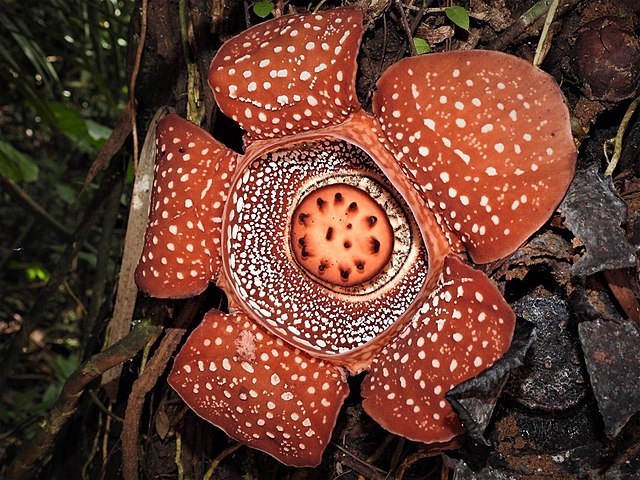
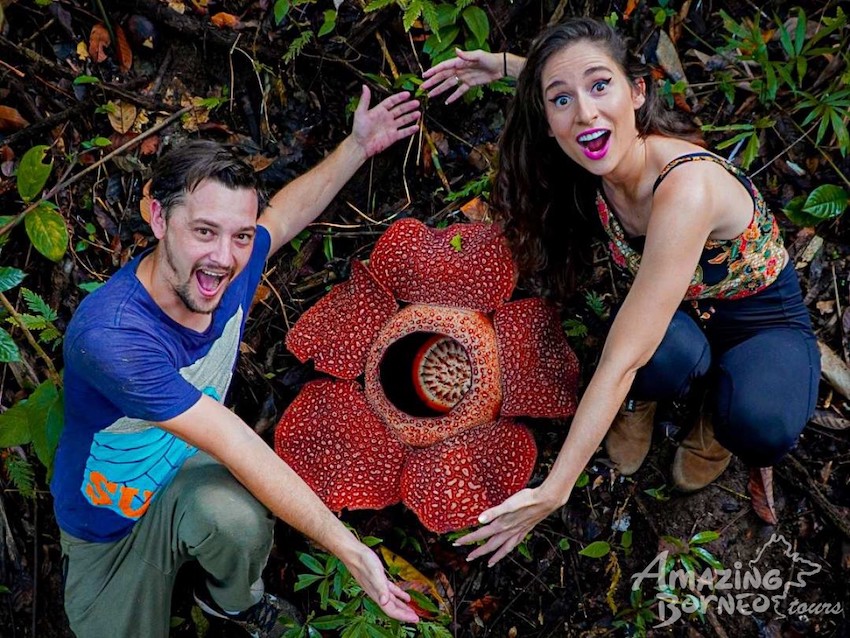
Unique Fauna Species:
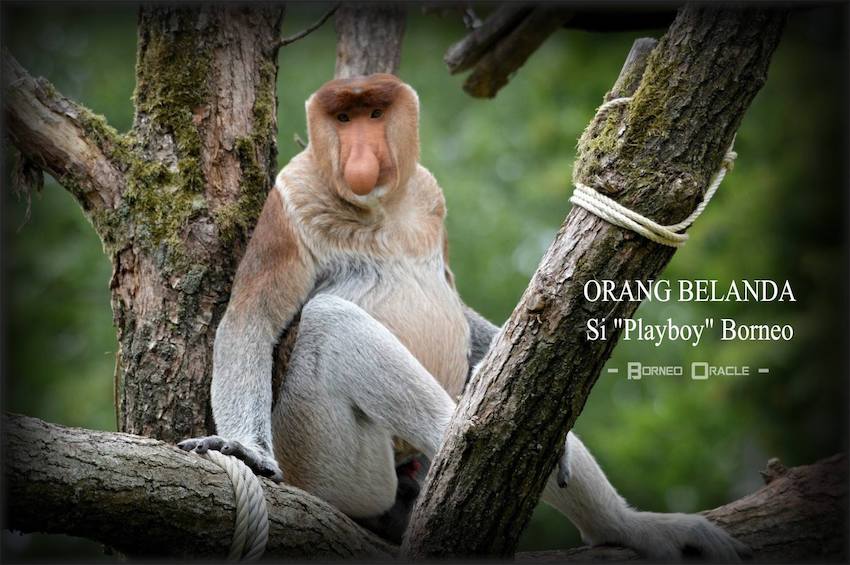
Due to Sabah’s rich biodiversity, you can encounter unique animal species here such as the Borneo pygmy elephant, the orangutan, the Silver Leaf monkey and the endemic Proboscis monkey, a.k.a. the “Playboy of Borneo” because of its distinctive, sizeable fleshy nose (proboscis), potbelly and unique appearance. Such a title was given to Proboscis monkey by animal researchers, because of the alpha male’s dominant nature, who is the head of the group and is considered his family with tens of “wives and children”. It was a big surprise to learn that Proboscis monkeys can’t eat bananas, and can’t tolerate anything with sugar due to their unique digestive system. The Proboscis monkey is one of the protected species in Borneo. It is very special that it only lives in Borneo and nowhere else in the world. The Proboscis monkey (Nasalis larvatus) is an iconic symbol of Sabah and is particularly associated with the island of Borneo. It also plays a significant role in promoting tourism in Sabah, it has become a symbol of the region’s rich biodiversity and attracts visitors from all over the world who are eager to catch a glimpse of these peculiar primates in their natural habitat.
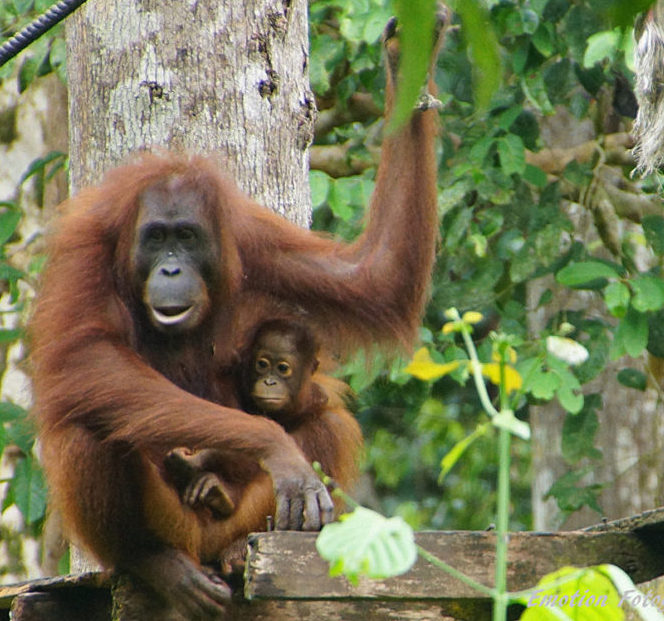
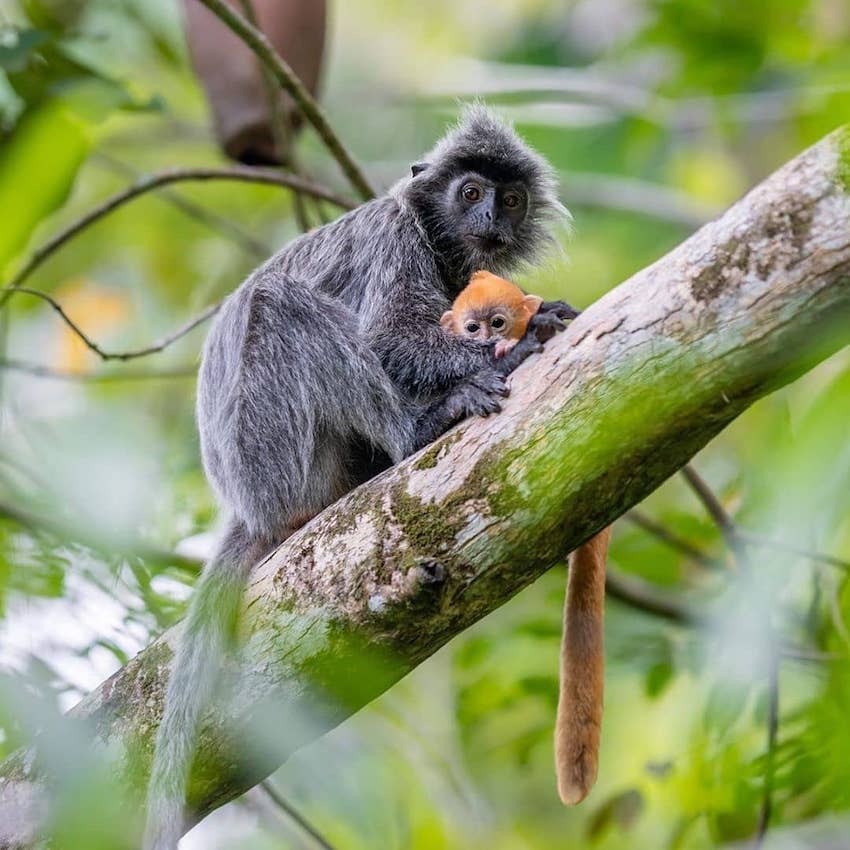
The rich birdlife makes Sabah a favourite spot for birdwatchers, and a festival is dedicated to this activity. It is home to 688 bird species, boasting 33 endemics among these. It is one of the best birding and wildlife areas in Malaysia, including the iconic Bornean bristlehead, and its national bird, the Rhinoceros hornbill.
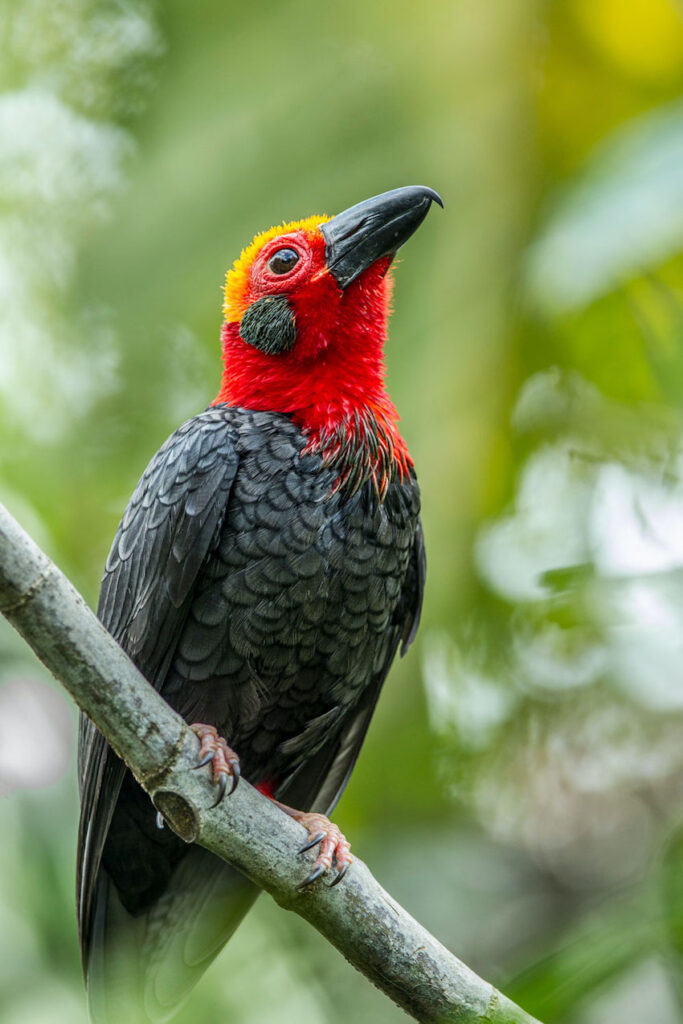
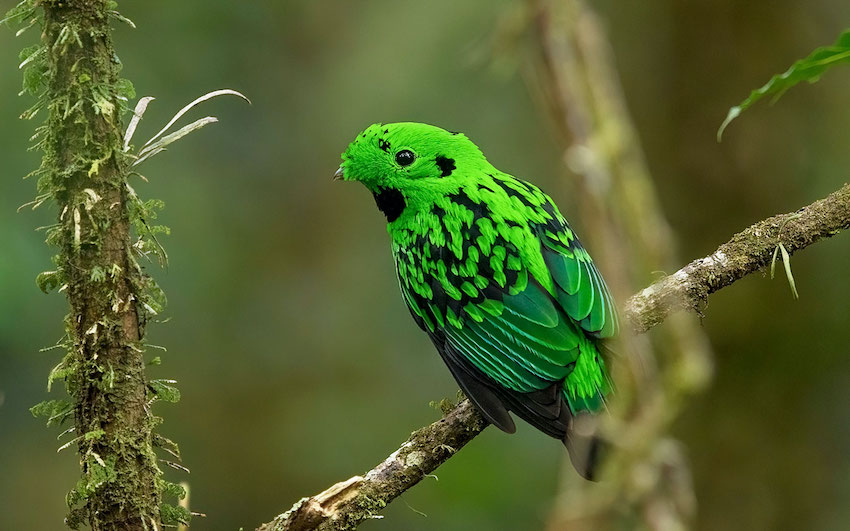
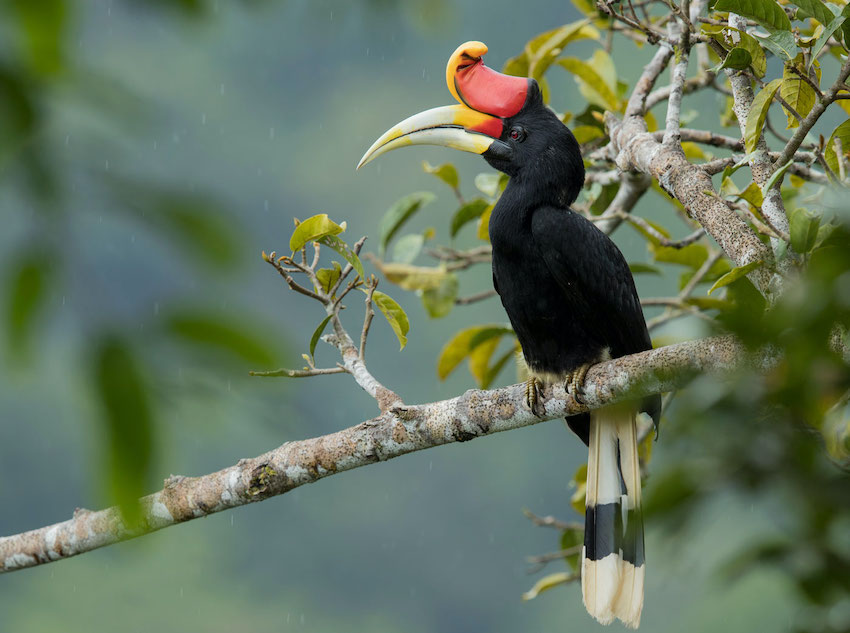
Conservation Areas and Centres:
The Malaysian Government is making many efforts to ensure that these monkeys continue to exist on Malaysian soil like at the Labuk Bay Proboscis Monkey Sanctuary in Sandakan, as this unique animal is in danger of extinction. In addition to the big-nosed monkeys, Sabah is also very proud of its 11,000 orangutans. Orang Utan means “man of the forest” in the Malay language. Seeing an orangutan, another emblematic animal of Sabah, in its natural habitat is one of best wildlife experiences you can have in Borneo.
The Labuk Bay Proboscis Monkey Sanctuary was founded by a local palm-plantation owner and is located on his oil palm estate, about 38 kilometres from Sandakan. This privately run sanctuary has two observation platforms for monkeys, where feeding takes place twice a day and are visible to visitors.
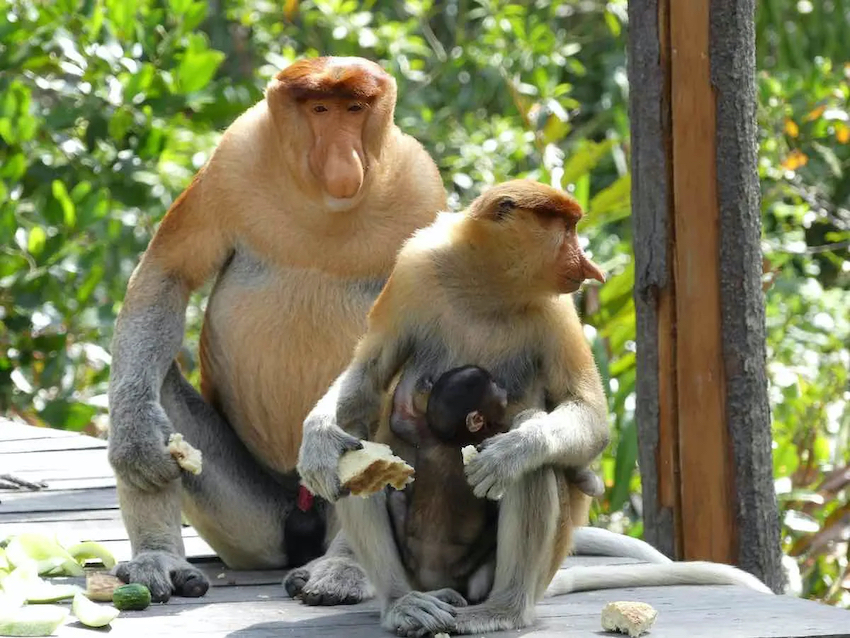
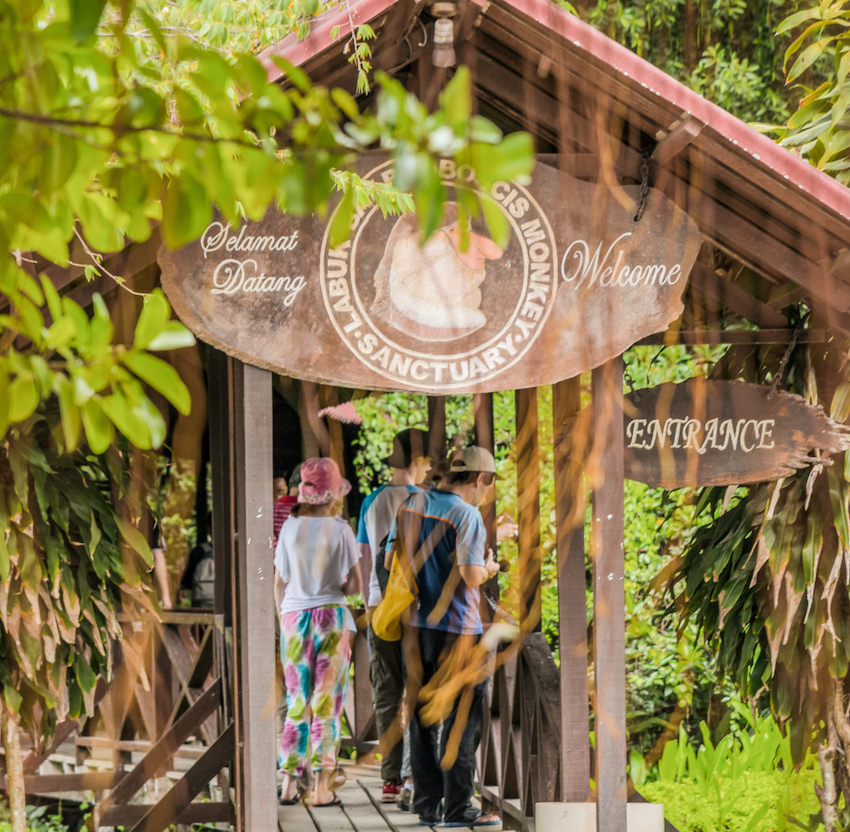
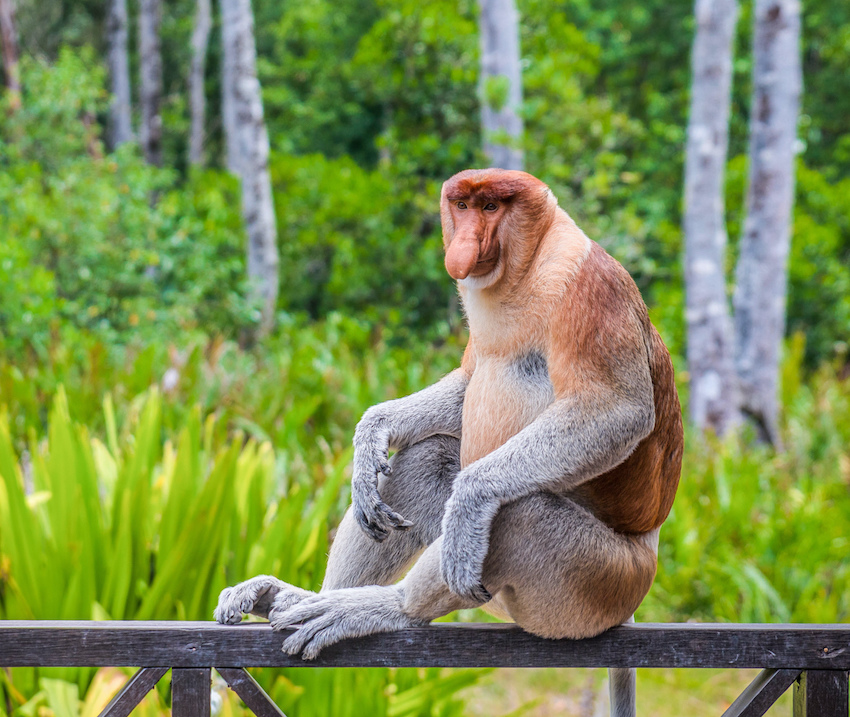
The Kinabatangan River area, home to an estimated 1,100 orangutans, offers the best chances of seeing a wild orangutan of any location in Sabah, plus a whole range of other endangered species including pygmy elephants and Proboscis monkeys.
The Danum Valley Conservation Area is home to a 130-million-year-old ancient rainforest and ecosystem with an astonishing diversity of wildlife. This 438-square-kilometer reserve is also home to the tallest trees in the tropics, with the largest Yellow Meranti tree towering 100.8 meters above the forest ground and a further 30 trees reaching heights of over 90 meters.

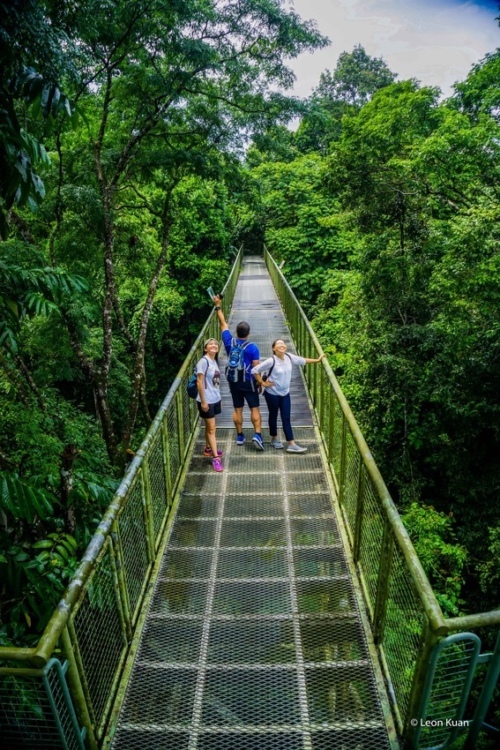
For those interested in architectural monuments, it is worth visiting Sandakan, the second-largest city in Sabah, sometimes referred to as Little Hong Kong. The vicinity of Sandakan presents amazing options for wildlife lovers, with captivating sites and attractions waiting to be explored:
– Located 25 km from Sandakan, the Sepilok Orangutan Sanctuary is the best known of the four orangutan rehabilitation centres in the world. Sepilok was set up in 1964 for injured, orphaned or rescued orangutans who are trained how to survive in the forest; a learning process that can take years. Once rehabilitated, orangutans are released into the surrounding forest.
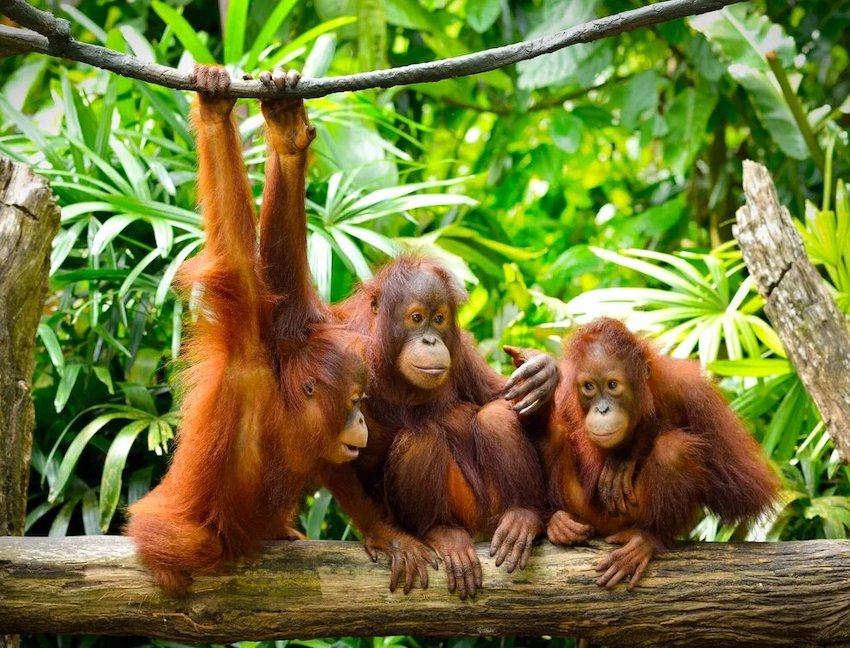
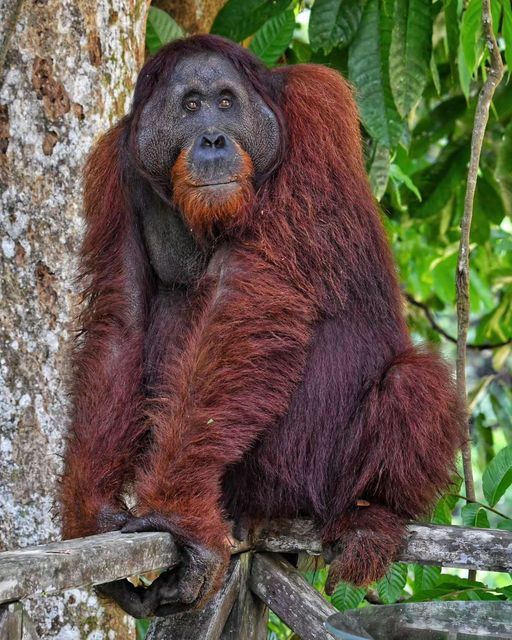
– Located within walking distance of the Orangutan centre, the Bornean Sun Bear Conservation Centre (BSBCC) was opened in 2008 as a non-profit organisation, dedicated to the smallest of the world’s eight bear species and perhaps the least known bear. The female sun bears weigh between 27-50 kg, the males between 30-65 kg.
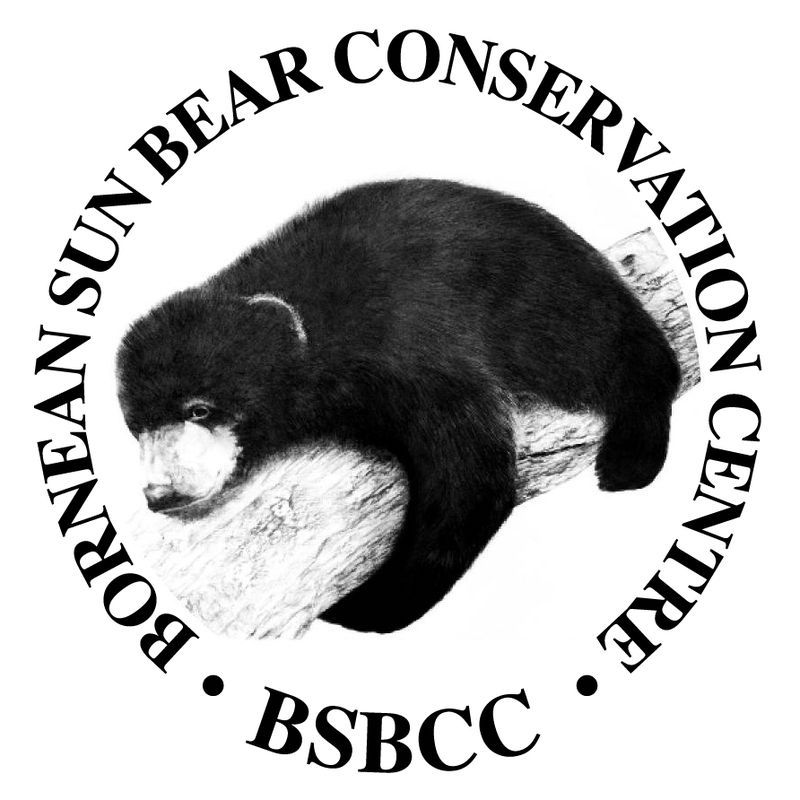
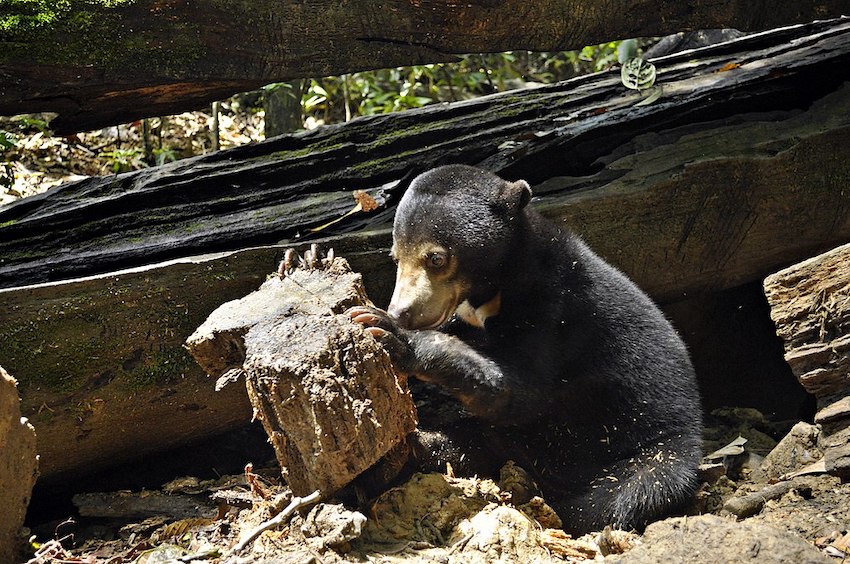
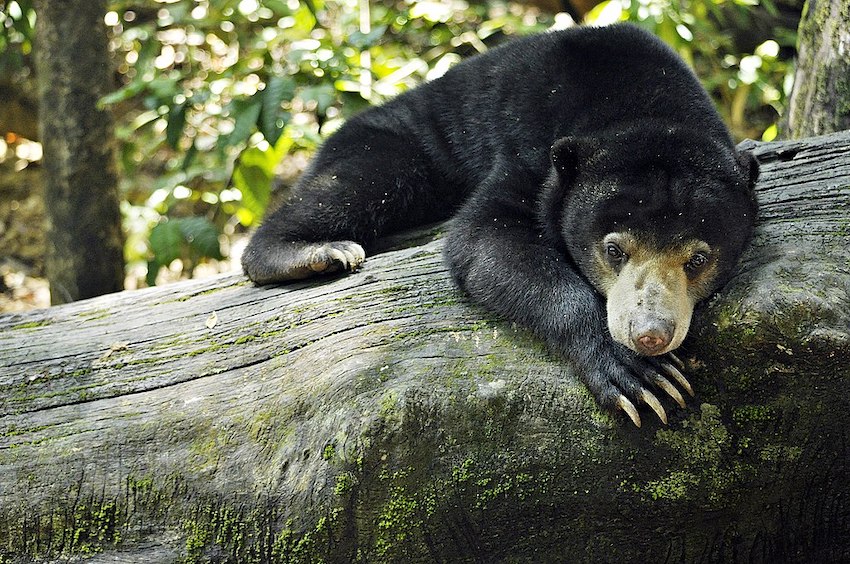
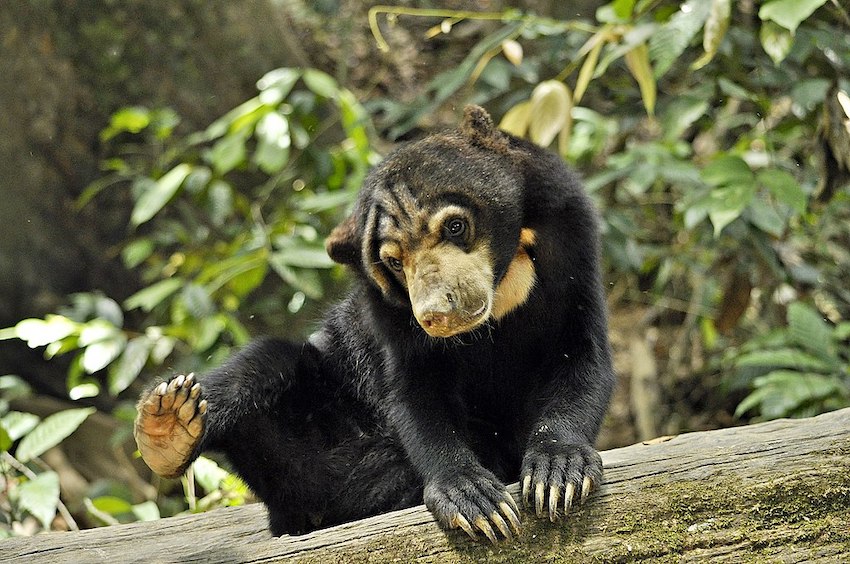
A place not to be missed is Kota Kinabalu, known locally as KKCity, the fast-modernising capital of Sabah with 1,8 million inhabitants, situated by the sea, a bustling administrative and commercial hub full of interesting sites, including cultural attractions, restaurants and cafés, also offering excellent shopping opportunities.



The Cultural Heritage in Sabah:
Sabah, with a population of 3,4 million, is the melting pot of distinctive cultural identities and ethnicity of its people, boasting 33 indigenous ethnic groups who speak 50 languages, each with its own unique traditions and customs. I was fascinated not only by the lush greenery but also by the vibrant cultural heritage within its communities. I admired the intricate patterns and vibrant colours of their folk costumes, reflecting craftsmanship passed down through generations. Moreover, the head decorations worn by Sabah’s indigenous communities are a sight to behold. These ornaments serve as symbols of status, spirituality and cultural pride.
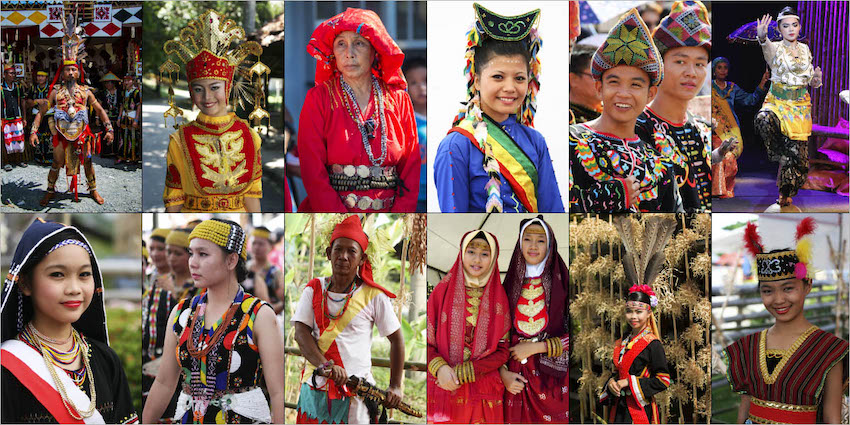
But perhaps what left the most lasting impression on me was witnessing the joyous dances of Sabah’s people. Dance is an integral part of their community life, expressing their cultural identity and collective spirit, inviting outsiders like myself to join them.

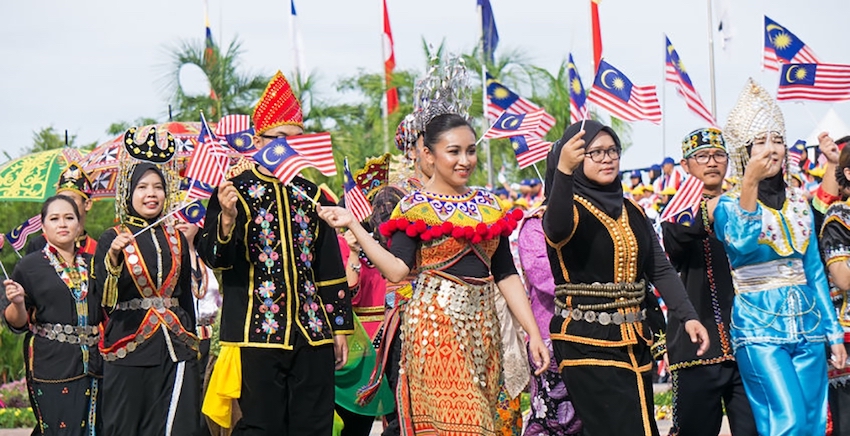
What struck me most about Sabah’s cultural landscape was the sense of peace and harmony that permeates the communities. Despite the diversity of people, there is a shared sense of respect and mutual understanding that transcends all differences. It is a testament to the resilience and unity of Sabah’s inhabitants, who have long lived together in peaceful coexistence.
Sport activities:
When it comes to recreational activities, golf holds a prominent place in Sabah, boasting an impressive number of 70 golf centres in the region. Additionally, white-water rafting attracts numerous enthusiasts seeking adrenaline-pumping adventures.
Community-Based Tourism (COBT):
Rural tourism, also called community-based tourism, is another popular pursuit, inviting visitors to immerse themselves in the cultural life and traditions of Sabah’s tribal communities by spending several days in their villages. Sabah prioritises the development of what they call community tourism, recognising its pivotal role in enhancing the well-being of local societies and fostering sustainability. Despite the region’s pristine natural beauty, it is noteworthy that major international hotel brands are present here and cater to the diverse needs of travellers.
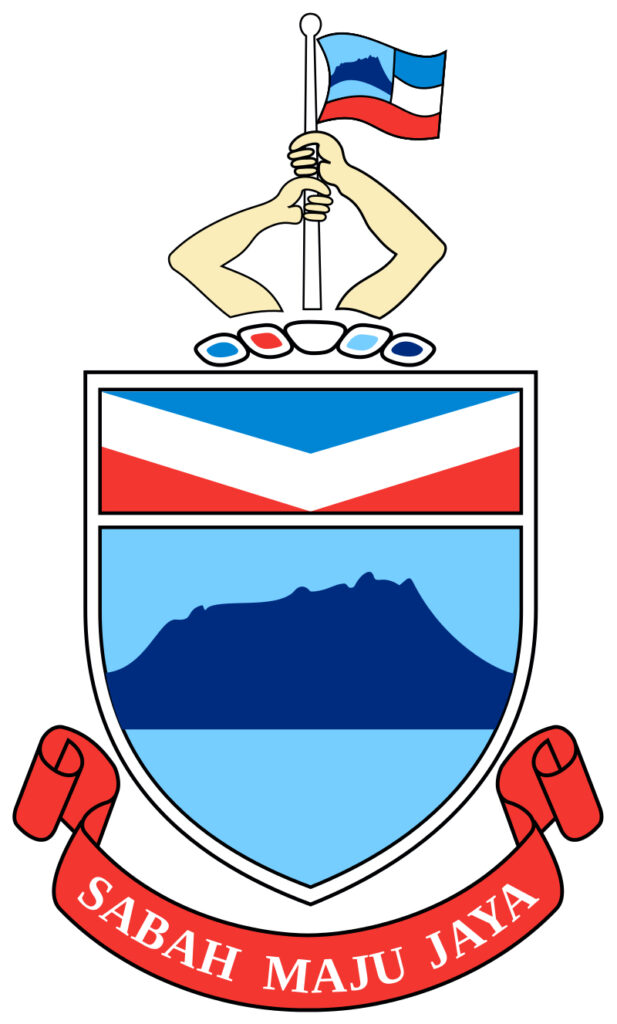
Sabah’s charm is intricately woven from the exquisite tapestry of its natural marvels, cultural riches and the genuine warmth of its inhabitants. Between breathtaking landscapes, diverse ecosystems and vibrant traditions, visitors discover an enchanting realm where every moment is a treasure.
It is a place where the spirit of tolerance thrives, inviting visitors to immerse themselves in captivating experiences that linger in their hearts for a lifetime.
Sabah Maju Jaya – Let Sabah Prosper!

Source: Embassy of Malaysia in Budapest
Photos by the Embassy of Malaysia, sabahtourism.com, Facebook of Sabah – Malaysian Borneo, Facebook of Borneo Orchid Society Sabah, and DPA


